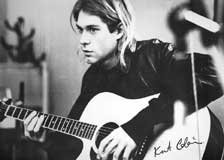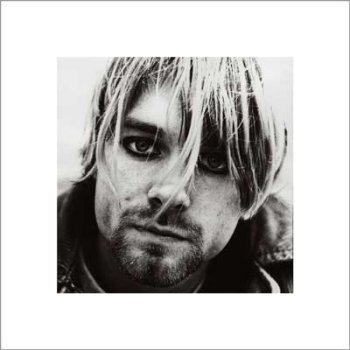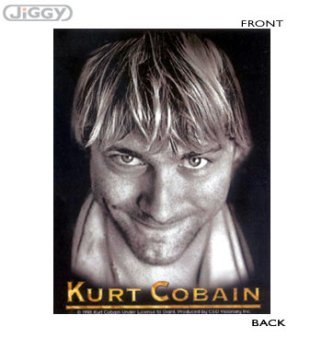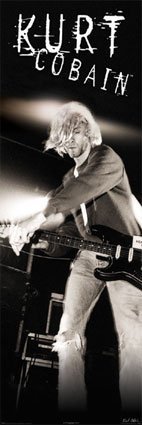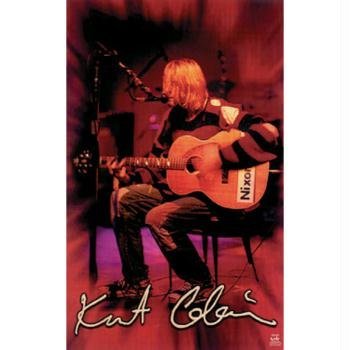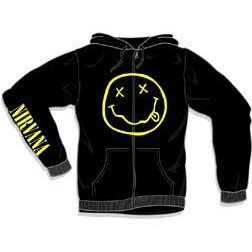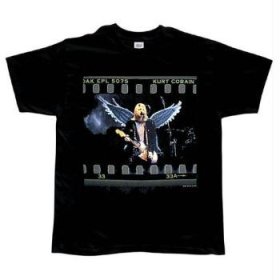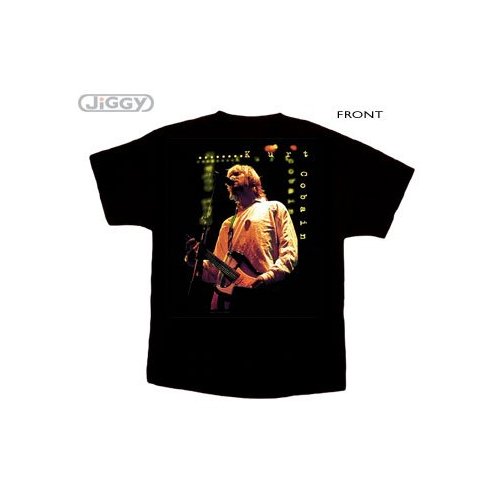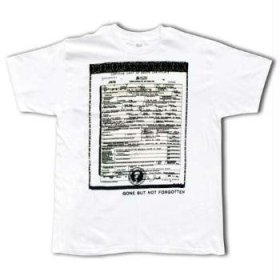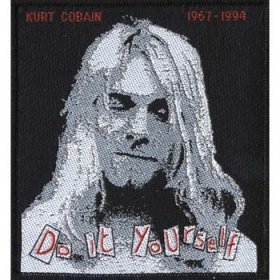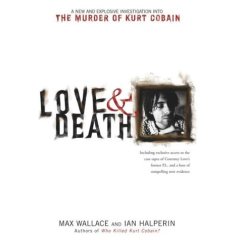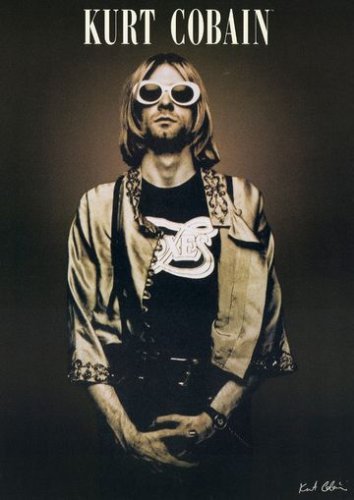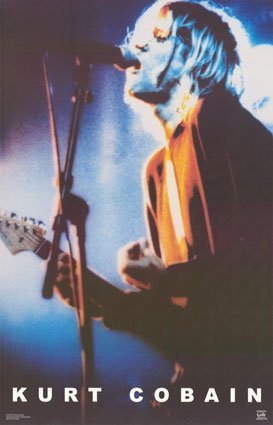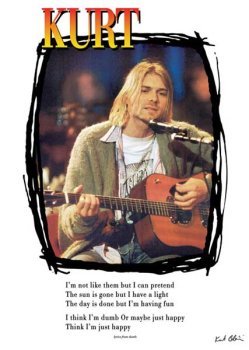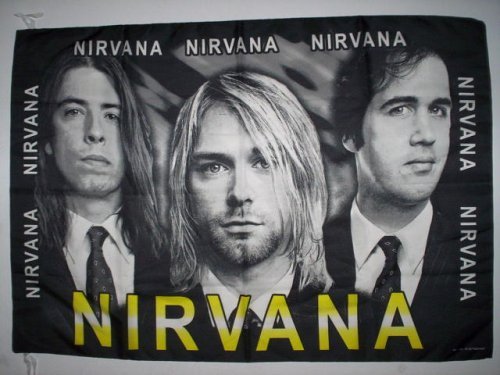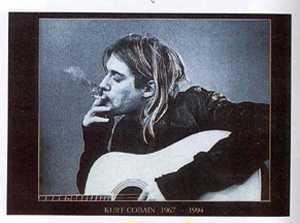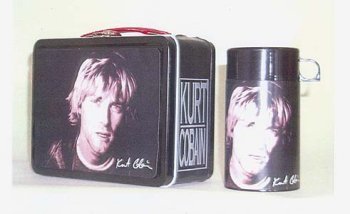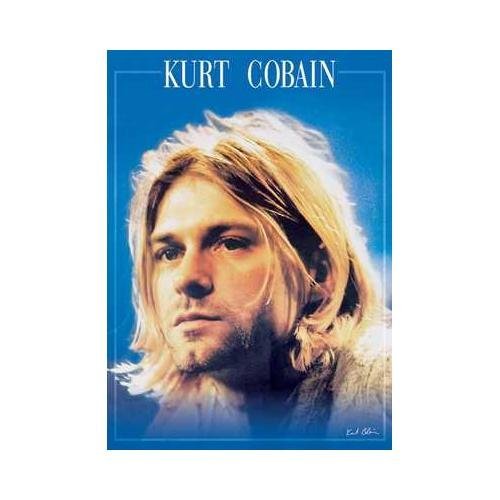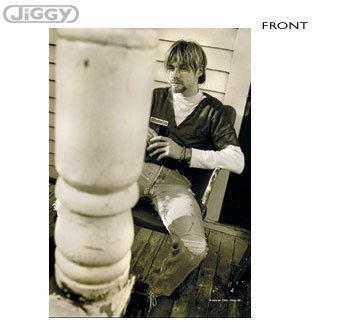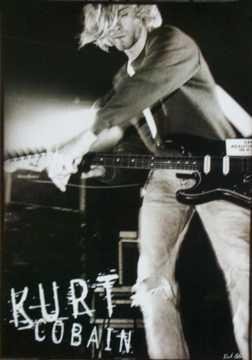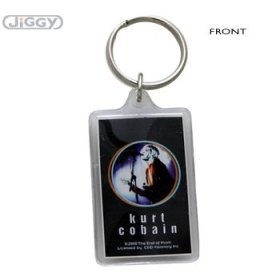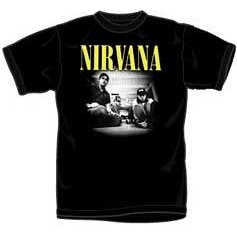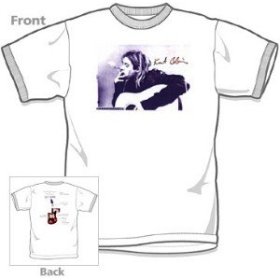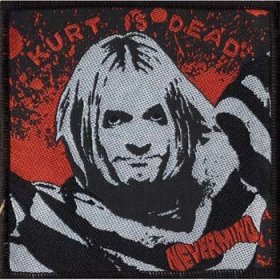|
The Murder of Kurt Cobain by John Philpin April 2003. Lake Washington Boulevard. Seattle. In a featherweight afternoon rain. Trees shroud the house on the hill. The greenhouse-garage is gone, razed and trucked away. There is no hint of what happened here. At the Sunset Tavern in the Ballard District, Five sits on his Marshall amplifier. “I live out that way so I drive by there a couple of times a week,” Five says. “It still feels strange.” It was April 1994, in the greenhouse above the garage, late at night, that Kurt Cobain died. Of a self-inflicted shotgun wound, the medical examiner said. Fans gathered under the Wishkah River Bridge where Cobain was said to have slept in his less affluent days. They lighted candles, held each other, wept, and mourned the loss of the pioneering grunge rocker. He was twenty-seven. Five was a senior in high school in 1994. His name was Stephen or “Steve” then, and he had been making music for fourteen of his eighteen years. When he was not writing or performing his tunes, he was listening. Clapton. Dylan. Coltrane. Zappa. Patti Smith. Buddy Guy. Jimi — Seattle musician Jimi Hendrix, another tragedy, another twenty-seven year old — Pearl Jam, Sound Garden, Nirvana. Playing a gig that spring, Five covered “Smells Like Teen Spirit,” the Cobain song that exploded on the music scene and redefined rock for the decade. Weeks later, the author of his generation’s anthem was dead. Cobain’s handwriting changes from the body of his suicide note to the last paragraph. He was shooting up. Motor coordination goes into the toilet. He had recently overdosed while in Europe, hadn’t he? Probably bipolar. Chronic stomach pain. Heroin abuse. The express train to fame. The poor guy could not handle the life. Case closed. Or was it? Five plugs in, tunes his Fender guitar. He hits the opening notes of “Morning ‘Trane,” his paean to John Coltrane, the American Northwest, and a fast train east should the need arise. “I went looking for the Gypsies but the Gypsies were gone. They’d slipped away inside the dawn.” “It’s a different scene here now,” Five says. I was between books, visiting Seattle for the first time, eating salmon twice a day, prowling the Experience Music Project, listening to the buskers at Pike Place Market. With the exception of the final paragraph, Cobain’s last scribblings in red ink found near his body did not sound like a suicide note. Perhaps he thought he would quit the music business, leave Seattle, divorce his wife ... but kill himself? In the months following Cobain’s death, positions were staked out, accusations flew, and websites proliferated in what became a political pissing match that obscured Kurt Cobain’s contributions to American rock music. In 1994, I was on the fence, aware only of the controversy. In April 2003, I had the time to forensically examine the case, and to achieve a personal closure. Rome. The Excelsior Hotel. March 6, 1994. Cobain was found unconscious on his hotel-room floor, blood trickling from his nose. The offending drug was Rohypnol, a fifty-pill overdose that left the rocker comatose. When he awakened twenty hours later, he denied that he had attempted suicide and said he had no memory of what happened. His wife had a prescription for the drug. Cobain ingested them — to die or get high? Pundits would later interpret the Rome incident as a behavioral precursor to suicide. Fair enough. The possibility remains, however, that this was a dress rehearsal for homicide. On March 18, Seattle Police responded to a call from Cobain’s home. He had a gun, had locked himself in a room, and he was threatening suicide, the caller said. Cobain denied he was suicidal, telling police he had locked himself away from his wife. Recognizing the scene as “volatile,” police siezed weapons and some pills. Was this another warning? The police report includes the following: “After further interviewing [name blacked out] stated that she did not see him with a gun, and he did not say he was going to kill himself.” Additional evidence? Two of Cobain’s uncles committed suicide; both used firearms. In 1993, Cobain had been booked by Seattle police for domestic assault. Clearly there was turbulence in the home, and police confiscated weapons. In July 1993, what was described as a “heroin overdose” in New York. Enough? The guy shot up and blew himself down, right? Wrong. However persuasive it may be, peripheral anecdotal information is not the place to start an examination of an act of violence. For that we must adjourn to the room above the garage on Lake Washington Boulevard. It was a steady, soaking rain on the morning of April 8, 1994 when police entered the greenhouse at 171 Lake Washington Boulevard East. The first officers on the scene called in a suicide (gun in place, note present) and requested a homicide team for investigative purposes. Officer Von Levandowski had previously been to the residence, was familiar with Kurt Cobain, and was also aware that a family member had reported Cobain AWOL from drug treatment. “The families [sic] fear was that the victim was suicidal and he had recently bought a shotgun.” Identifying information is blacked out on the report of the call, but the narrative clearly suggests that Cobain bought the shotgun after fleeing rehab. Cobain’s friend Dylan Carlson purchased the twenty-gauge Remington shotgun March 30, before Cobain entered treatment. Cobain wanted the gun to protect his home against intruders, he said, and specifically requested light loads that would not blast through walls and threaten others in the house. He gave Carlson the cash for the purchase because he did not want the weapon confiscated as his others had been. Carlson reported that Cobain took the gun to his residence. Cobain’s Volvo squatted on foor flat tires in the garage below the greenhouse. No one acknowledged deflating the tires to curb Cobain’s wandering. Is this evidence of the intruders that concerned him? Police found the receipt for the gun in Cobain’s jacket pocket. Levandowski’s report places the shotgun’s butt near Cobain’s feet, the barrel at mid-chest. A cigar box adjacent to the body contained syringes, a blackened spoon, and a black-tar substance (heroin). The note was to Cobain’s left. In early April 1994, it was reasonable that public and private expectation for Kurt Cobain include that he might commit suicide. When officers walked into the room above the garage, the scene screamed suicide. And therein lies the rub: it is a well-scripted play with superior set design — so well-written, and so flawlessly staged that it defies reality. There were no usable fingerprints on any of the key items in the greenhouse, including the shotgun. The gun’s recoil might blur a user’s prints, but someone had to remove the gun from its nylon case and handle the weapon prior to its use. Carlson and Cobain purchased the gun on March 30. Cobain placed it in his residence, then left for Los Angeles on his aborted rehab trip. Did he wear the same jacket from March 30 through April 4-5? Why carry the receipt? Carlson also said Cobain had the shotgun shells with him on his way to Sea-Tac Airport and gave them to a cab driver to avoid airport difficulties. The receipt for the gun does not include mention of any shells, not is there a separate receipt for shells from March 30 or any time after his return to Seattle. Toxicology reports revealed traces of Diazepam (Valium), and a morphine level of 1.52 mg/liter. Pharmacology experts agree this is a massive dose of heroin (some refer to it as three times a lethal dose), one that would render the user at least severely impaired, if not unconscious, rather quickly. The combination of Diazepam and heroin, of course, enhances the potential for a lethal event. While it remains possible that Cobain injected the drug, returned the syringe to the cigar box, placed the shotgun in position and fired it, this sequence seems unlikely. Officer Levandowski noted in his initial observations that the gun was upside-down, extending from Cobain’s mid-chest area where his left hand gripped the barrel, to his feet. In this position, the single spent shell should have ejected to the right. The shell was found on Cobain’s jacket, to his left. The combination of body movement and gun recoil following the shot would be sufficient for the gun to slip away from the mouth and six inches lower on the chest. With the left hand still gripping the weapon (as it was when police observed the body), it would not flip totally upside- down. Further, if Cobain had gripped the barrel of the gun and placed it in his mouth, then reached with his right hand to press the trigger, his behavior would have been counter- reflexive. Kurt Cobain was left-handed. There is evidence suggesting that Cobain was in the greenhouse for an extended period of time. The note and pen were both present, indicating that the note was most likely written there. There are several cigarette butts, a pack of cigarettes, a lighter, and a partial can of root beer on the floor near the body. Did he go to the greenhouse so he would not be disturbed, so he could write of leaving Seattle, leaving Nirvana, and perhaps leaving his wife? There were two fresh needle punctures on his body, one near each elbow. Did he shoot up once, and sit there on the floor at work on his departure note until someone arrived — someone he knew, someone he would turn on with, a person sufficiently familiar with Cobain to know where to find the Remington shotgun? At the Sunset Tavern, Five greets Paul Johnson and Andrew Vavrek, other members of The Bond, one of the better groups in “the new Seattle sound” that has scribes of the music scene believing in a sonic resurrection for the city. I ask Five if, nearly ten years later, it makes any difference whether Cobain committed suicide or was murdered. “His was a unique and beautiful muse,” he says. “He was an open channel. It’s one thing if he opted to leave because the demands were so great, so intense that he just couldn’t deal with it. It’s totally different if someone decided to remove him.” After so many years and so much accumulating inertia, it is unlikely that this case will be reopened by the Seattle Police, and just as unlikely that there will be an inquest in the matter. In my book, this one remains an unsolved homicide. Grateful acknowledgement is made to Five Philpin for permission to reprint his song “‘Trane,” ©2001 by Five Philpin. “The Bond” performs regularly in the Seattle area. John Philpin is the author or co-author of seven books and numerous articles. He is a retired psychologist, a criminal profiler, and a rabid fan of good rock music. ©John Philpin, 2003 All Rights Reserved -- Do not reproduce in any form or circulate without permission. -- Information available exclusively through Karisable.com Los Angeles filmmakers were in Kurt Cobain's home town of Aberdeen, Washington November 16, 2005, shooting a documentary on his life narrated by Cobain himself using taped interviews with Michael Azerrad, author of “Come As You Are.” Director A. J. Schnack, 37, learned a couple of years ago that Azerrad had 25 hours of interviews with Kurt that he wanted to do something with. The film focuses heavily on his hometown of Aberdeen but the footage will be of how the town is now, not when Cobain lived there. Schnack wants this file to show the icon as he really was -- a human being. He will accomplish this through the words of Cobain himself, no interviews with friends or experts. The film starts with Cobain’s life in Aberdeen, Nirvana’s beginnings in Olympia, Seattle and then onto international fame. According to Shirley Moyers, the film’s producer, and Schnack’s wife, the film budgeted at $1 million, and will be sent to film festivals next fall.
An Open Letter to Courtney Love: Believe it or not, there are people who want her to make it Music by Kurt Cobain & Nirvana
Kari & Associates Copyright Kari Sable 1994-2006 |
Music by Kurt Cobain & Nirvana Love & Death: Aninvestigation into the death of Kurt Cobain -- revealing evidence that points to a terrible conclusion. Wallace and Halperin conducted a ten-year crusade for the truth about what happened, and they are able to present a chilling and convincing case that Cobain did not commit suicide. Kurt Cobain, Wall Poster, 24x34 Kurt Cobain, Wall Poster, 22.25x34.5
Journals Kurt Cobain filled dozens of notebooks with lyrics, drawings, and writings about his plans for Nirvana and his thoughts about fame, the state of music, and the people who bought and sold him and his music. His journals reveal an artist who loved music, who knew the history of rock, and who was determined to define his place in that history. Here is a mesmerizing, incomparable portrait of the most influential musician of his time. Kurt Cobain - Lyrics, Art Poster Nirvana Kurt Cobain Kurt Cobain-Kurt Cobain 1967-1994 -- Print Kurt Cobain Metal Lunch Box & Thermos
Kurt Cobain - Sepia Textile Poster
Kurt Cobain-On Stage W-Black Guitar -- Print
Kurt Cobain T-Shirt Microphone NIRVANA - Group Photo - Black T-shirt Kurt Cobain T-Shirt, Guitar |

